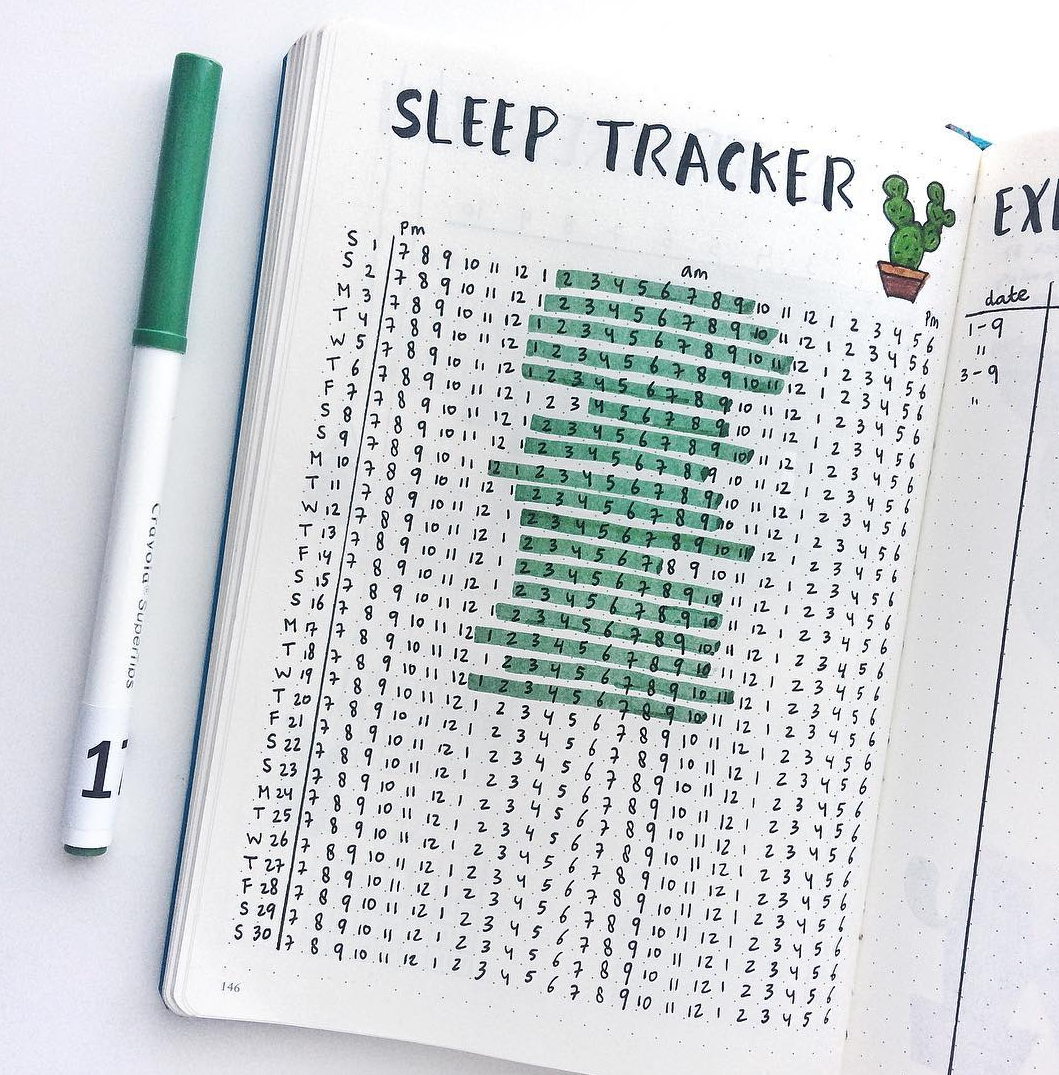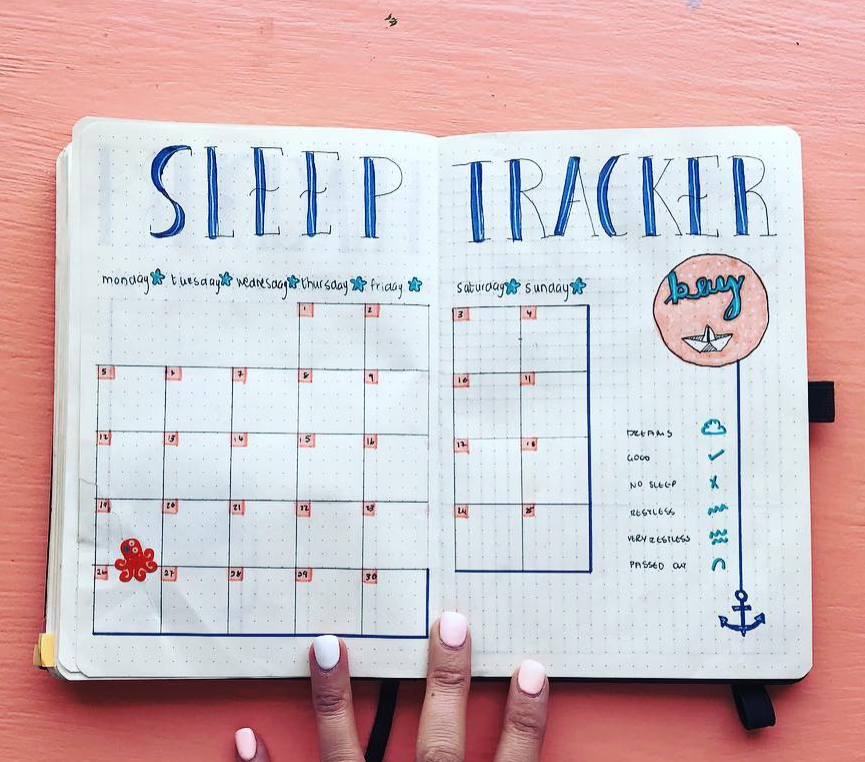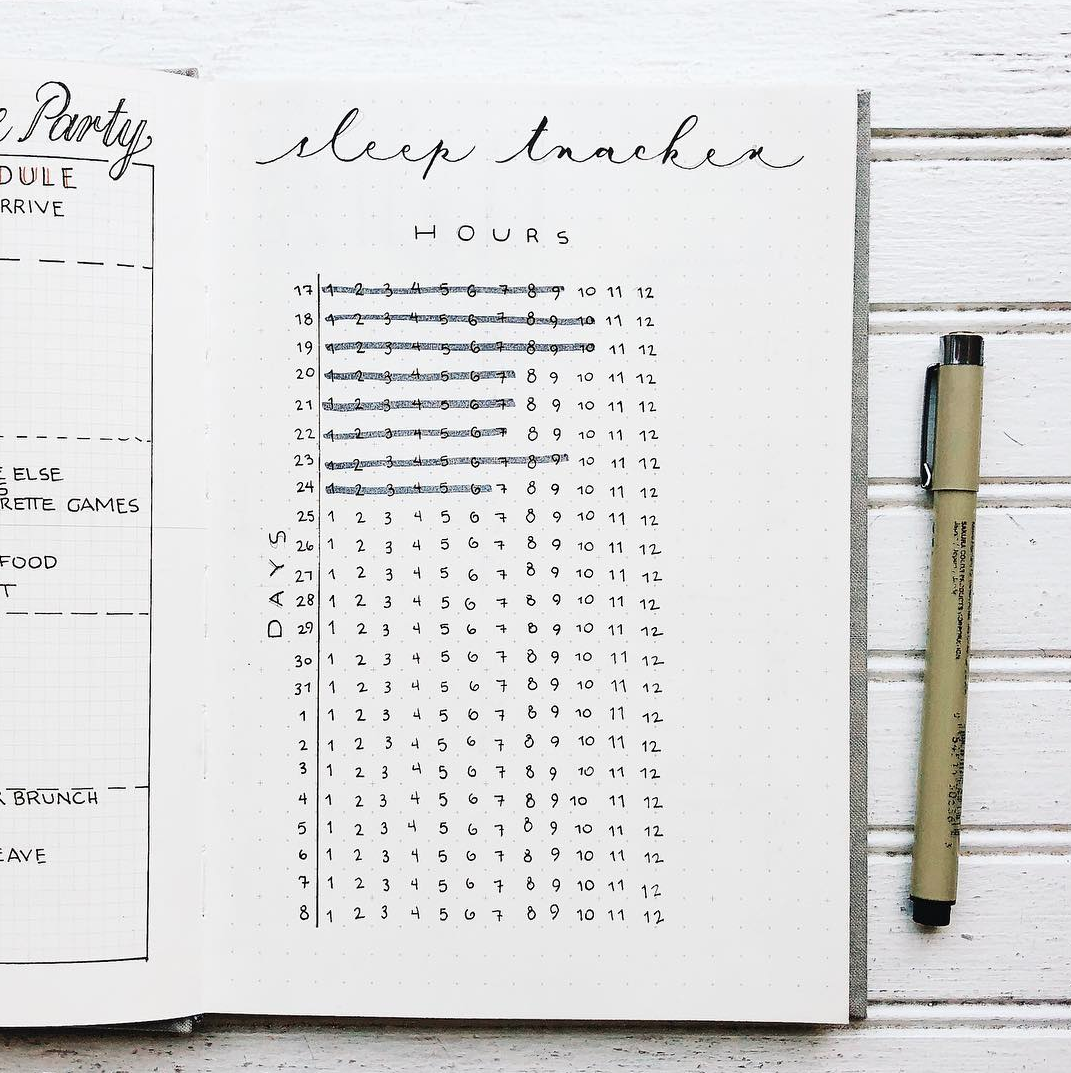Bullet Journal Sleep Tracker
I’m a night owl and going to bed has never been my strong suit. Since it’s a new year, I decided to make a better effort at sleeping longer and giving my body the rest it needs.
This post may contain affiliate links. Please see my full disclosure for more information.
Wondering about the best way to go about it, I did a little research and realized I could incorporate my sleep goal into my bullet journal!
I’m going to start logging sleep with a sleep tracker. I found lots of creative tracker ideas incase you want to keep an eye on your sleep habits as well.
In addition, I took some time to explore why sleep is important, the stages of sleep, how to sleep better, and how to fall asleep when you can’t (something I really needed to learn!).
I’ve also added some sleeping quotes that you could add to your bullet journal tracker page.
And finally, I’ve created a FREE SLEEP TRACKER PRINTABLE that you can use with your planner or bullet journal. You’ll find the download at the end of this post.
What is bullet journaling? Learn how to bullet journal and what supplies you’ll need to get started. Want to see more bullet journal trackers? Check out a few such as water intake trackers, savings trackers, and movie trackers.
Be sure to read all the way to the end so you don’t miss a thing!
The Four Stages of Sleep
According to TUCK, there are 4 (not 5) stages of sleep. They go in order and are important for a deep night’s sleep.
Stage 1 - The lightest form of Non REM sleep
Stage 2 - The first actual stage of Non REM sleep. The longest sleep cycle, this accounts for 40-60% of sleep time.
Stage 3 - Deep Non REM sleep. This is a restorative sleep resulting in 5-15% of overall sleep time.
Stage 4 - REM Sleep happens after the 3 other phases of sleep. Occurs after approximately 90 minutes of sleep. When most vivid dream occur.
Sleep cycles repeat every 90-120 minutes per night. Most people experience 4-5 sleep cycles per night.
How to Sleep Better at Night
In an article for the NY Times, author Tara Parker-Pope explains that “people who seven hours a night are healthier and live longer” than those who don’t get that much sleep.
Not getting enough sleep is associated with all kinds of health problems including diabetes, heart disease, impaired immune function, obesity, and depression.
But how do we sleep more and get a more restful sleep? The National Sleep Foundation recommends the following sleeping tips.
Create a sleep schedule and stick to it even on the weekends. This will help regulate your body’s internal clock.
Don’t nap. I love napping, but apparently it’s not the best thing for a good night’s sleep. Taking even a cat nap can throw off your nightly schedule, so try to avoid napping.
Relax with a nighttime routine. Bedtime is a time to unwind and recharge. Avoid activities that can make you stressed or anxious. Create a relaxing routine such as reading, meditating, journaling, or stretching before going to sleep.
Exercise every day. Make sure you get some sort of exercise even if it’s just a short walk around the block.
Make your bedroom a respite. We’ve brought a lot of things into our bedroom that impede a good night’s sleep: TV’s, cell phones, workout equipment, and other distractions. Create a zen space where you can relax and unwind from all of life’s activities. Block out light, noise, and create a cool sleeping environment.
Invest in a good bed. Since you spend approximately 1/3 of your life in bed, spend some money on a quality mattress, pillows, and sheets. You’ll not only feel pampered, but you’ll also sleep better.
How to Fall Asleep When I Can’t?
I sometimes have a hard time winding down at night and I found there are proven ways to fall asleep in less than three minutes!
The Military Sleep Method
According to Healthline, there’s a way the military trains soldiers to fall asleep fast. Here’s what they recommend.
Relax your entire face, including the muscles inside your mouth.
Drop your shoulders to release the tension and let your hands drop to the side of your body.
Exhale, relaxing your chest.
Relax your legs, thighs, and calves.
Clear your mind for 10 seconds by imagining a relaxing scene.
If this doesn’t work, try saying the words “don’t think” over and over for 10 seconds.
Within 10 seconds, you should fall asleep!
Visualize a Calm Place
What is a place or memory that brings you peace? It could be laying on the sand at the beach, listening to the waves. It could be visualizing a green grassy field, or a gentle spring rain. Visualize that place and let your mind drift.
Concentrate on Your Breathing
Clear your mind and focus on simply breathing. Take deep relaxing breaths in through your nose and out through your mouth.
Flex and Release
Beginning at your toes, gently flex and release each muscle of your body. Work your way up slowly until you reach your head.
Sleeping Quotes
Add sleep quotes to your tracker page in your bullet journal! It will help you stay inspired and focused on your sleep goal.
“Sleep is the best meditation”. - Dalai Lama
“Let’s start by taking a smallish nap or two.” - Winnie the Pooh
“A well-spent day brings happy sleep”. - Leonardo de Vinchi
“A good laugh and a long sleep are the two best cures for anything”. - Irish Proverb
“Tired minds don’t plan well. Sleep first, plan later.” - Walter Reisch
“Your future depends on your dreams, now go to sleep”. - Mesut Barazany
“Think in the morning, Act in the noon. Eat in the evening. Sleep at night”. - Robert Blake
“Being a sleepy girl with a busy life is hard.” - Anonymous
“Always remember to fall asleep with a dream and wake up with a purpose.”
“Dream sweetly. Sleep peacefully. Wake Happy.”
Benefits of Keeping a Sleep Log
Keeping a sleep log chart is a good way to identify your sleep patterns. Some people choose to track their moods along with their sleep trackers to help identify how sleep affects mood.
Keep a simple sleep log in your bullet journal to help identify these patterns. Below, is a collection of sleep trackers to inspire you to create your own.
How to Track Your Sleep
You can track it in a weekly sleep log or a monthly log. I’ve collected some of my favorite trackers. There are charts, graphs, wheels, and calendars. Which one will you choose for your bujo?
Image by @sharonajournals
Charts are a popular way of tracking sleep.
This monthly sleep tracker is created by listing the days of the month down the left hand side. To create this chart, the hours of the day are listed in rows for each day of the month. It’s a bit more work to write all of those hours out, but it’s easy to highlight sleep once the chart is created.
Image by @bujobysockergrynet
Create a simple wheel with sections for each day of the month. Add one extra section to the wheel for the hours of the day. Then assign the days to each one of the sections. Fill in each day with a colorful marker and then write the hours slept at the top of each section.
This is a bright, unique way to log your sleep!
Image by @iham.bujo
This minimalist bujo sleep wheel is actually similar to the one above. Mark out the days of the month around the wheel as you would a clock. Add a column for the hours in the day. Then instead of filling in the colors with marker, just chart them out and connect the days. You’ll be able to see the ebb and flow of your sleep patterns.
Image by @chronically_creative_
This tracker is a bit different from the others shown here. Instead of tracking time slept, it records the quality of sleep. It’s in calendar format and features a key to record data. Quality of sleep includes: dreams, good, no sleep, restless, very restless, and passed out.
Image by @thebujophase
Here’s a tracker that records both sleep time and quality. Time is tracked on the grid and color coded by quality. Zebra Mildliners are perfect for this tracking technique.
This sleep tracker wheel uses simple blocks for each day of the month. Then using a color code system, the hours are recorded to create an effective and pretty wheel.
Image by @mylifejournalized
Here’s a fun sleep tracker! The author created a bedroom hiding under the staircase. Family portraits hang on the wall. The steps above are numbered for the days of the month and they will act as the tracker in this bullet journal.
Image by @the.stationary.diariess
Another simple sleep log with a minimalist vibe. To create your own, write make a simple graph. Place the hours slept going up the left side and the days of the month along the bottom. Plot hours slept on the graph and then connect them at the end of the month.
Image by @feeser_family
This sleep tracker has a fun mosaic to log sleep time on the chart. I really love that the author added the reasons for days she didn’t get enough sleep. What were some of the causes? Reading, holiday, kid’s sick, and too much caffeine. This is a handy way to understand personal sleep patterns and why they may get disrupted.
Image by @rachelwrites - Minimalist bullet journal sleep tracker
How will you track your sleep? Let me know what works for you in the comments below!















